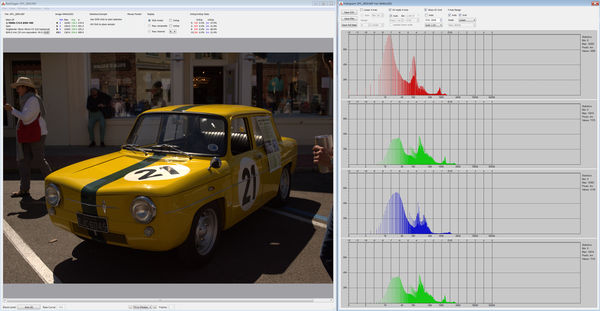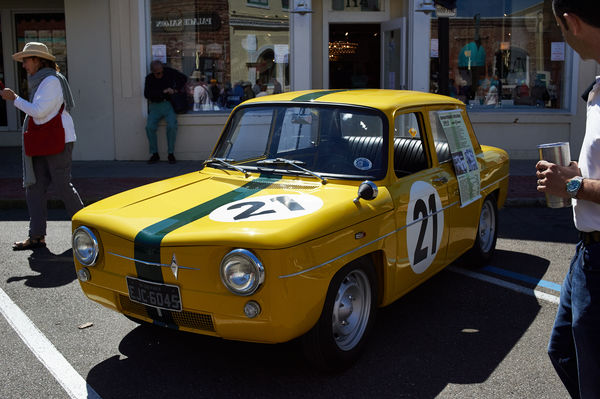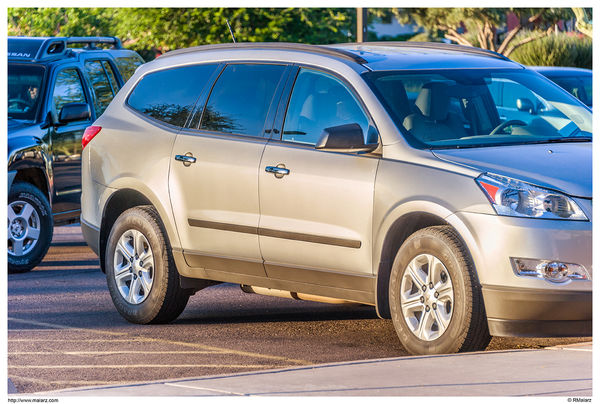Active-D Lighting - What does it do?
Mar 21, 2018 09:05:22 #
rmalarz wrote:
Scotty, The scene contains dark shadows to very bright sunlit clouds.
You are apparently and hopelessly locked in a mindset ...
You are apparently and hopelessly locked in a mindset ...
Hopelessly locked? That's a bit disingenuous.
If you had exposed that scene a full stop less or via the Sunny 16 rule, what would have been lost? Absolutely nothing that anyone can see! The JPEG would have looked closer to the final product and the shadows could have been brought back during raw processing or by intelligent use of Active-D lighting.
If ETTR/EBTR were necessary, yours would be the only images that would look any good. Everyone else's images would look like crap. But they don't.
Since most of us make perfectly fine images by simply minding our highlights, ETTR/EBTR is not a necessity. It's just something that you choose to play with.
PS: Maybe you would like to show us a JPEG SOOC of a scene like this image. It's got a wide DR but it looks like you used film in this case (you need to clean up the spots). Would ETTR have not worked?
Mar 21, 2018 11:04:10 #
selmslie wrote:
... Maybe you would like to show us a JPEG SOOC of a scene ... Would ETTR have not worked?
Here is a scene with a wide DR that was, in ETTR terms, underexposed by nearly 2 stops. It's not a very good image but it will illustrate my point.
It was taken with Aperture priority at ISO 400 1/4000 sec @ f/8. I forgot that the meter was set to Spot and the exposure was based on the white hood.
If I had used Manual and Sunny 16 I would have taken it at 1/1000 sec and f/11, about one stop brighter.
The JPEG SOOC was very dark. Yet the image developed from the raw file (with about 2 stops of Exposure added in PP) does not suffer from excessive noise.
What would ETTR have done to make it any better? Probably nothing.
Mar 21, 2018 22:00:07 #
Since you want to stick with cars, here's one I photographed for a demonstration on using the ETTR/EBTR techniques. The first, as you can guess, is SOOC. The second was only processed in ACR simply normalizing the histogram.
The initial exposure was spot metered on the brightest part of the front bumper, just forward of the tire. I then increased the exposure 3 stops. That was later compensated in ACR. That was the only adjustment made.
I'm sure you'll find some reason to negate this example, but what really matters is the system works. It's very much the same as The Zone System, simply adapted.
--Bob
The initial exposure was spot metered on the brightest part of the front bumper, just forward of the tire. I then increased the exposure 3 stops. That was later compensated in ACR. That was the only adjustment made.
I'm sure you'll find some reason to negate this example, but what really matters is the system works. It's very much the same as The Zone System, simply adapted.
--Bob
selmslie wrote:
Here is a scene with a wide DR that was, in ETTR t... (show quote)
Mar 22, 2018 03:49:24 #
rmalarz wrote:
Since you want to stick with cars, here's one I ph... (show quote)
All that shows is that, if you don't blow the highlights, you can recover them.
But if you had taken the image without blowing the highlights in the first place, it would have been just as easy to recover the shadows.
You can deal with a wide DR either way. In fact, you could have achieved a satisfactory image using Active-D lighting and an exposure that was one stop darker, with no blinkies.
ETTR provided no benefit and you have not demonstrated that it is necessary. It's just another way to do the same thing.
Mar 22, 2018 07:31:22 #
Scotty, you need to understand that I didn't blow any highlights. I placed the highlights. I processed the image to retain the highlights at the level I considered appropriate for the final image. There is no miraculous recovery of anything. Creating this image with ADL would have been impossible, as RAW is unaffected by that. All one has to do is review the images, made with a digital camera, that I've posted over the last 2-3 years to see the benefit of using ETTR anytime. At this point, the lesson has ended and you can bloviate all you want about your supposed method of making image. I just hope those trying to learn how to make good photographs aren't misled by your opinions.
--Bob
--Bob
selmslie wrote:
All that shows is that, if you don't blow the high... (show quote)
Mar 22, 2018 08:05:46 #
rmalarz wrote:
Scotty, you need to understand that I didn't blow ... (show quote)
As I said, "All that shows is that, if you don't blow the highlights, you can recover them." I never said you blew the highlights.
You have shown that you can recover highlights. I have shown that I can recover shadows.
What we both have shown is that modern digital cameras have wide latitudes and that exposure is no longer critical so long as you don't blow the highlights.
That was not the case more than ten yeas back when cameras did not have wide latitude and good noise control. You had to meter carefully and resort to ETTR/EBTR.
But there is one thing that is constant - direct sunlight. You don't have to meter it to find out that it hardly changes at all between about 9AM and 3PM. Another thing that is constant is the reflective properties of natural objects like clouds and egret feathers. You don't need to meter them. Remember Einstein's, “The definition of insanity is doing the same thing over and over again, but expecting different results.”
That's why I demonstrated that I could take a whole day's worth of images with the same exposure on manual without ever consulting the meter - see Exposure Value - No metering used and more examples at https://www.scotty-elmslie.com/2018-concours.html
Incidentally, all of those images were captured using Daylight white balance with no color adjustment later on the computer.
I apparently understand the subject better than you do.
If you want to reply, then register here. Registration is free and your account is created instantly, so you can post right away.





